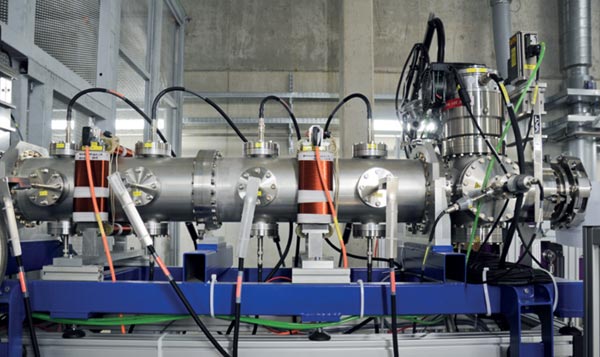
Image credit: SCK•CEN. Used by permission.
A particle accelerator has been successfully coupled to a nuclear reactor for the first time at the Belgian Nuclear Research Centre (SCK•CEN). The demonstration model GUINEVERE is now in operation, showing the feasibility of an accelerator-driven system (ADS) for nuclear energy. By using an ADS, the accelerator can be turned off to stop the reactor immediately. This system, known as subcritical, is safer than standard nuclear reactors.
GUINEVERE is a test installation of limited power to fine-tune the operation and control of future subcritical reactors. Unlike conventional reactor systems, it produces fast neutrons that can be used for the transmutation of high-level radioactive waste into less-toxic products with shorter life spans, helping to improve their geological disposal.
The GUINEVERE project involves a dozen European laboratories and the European Commission. The accelerator was built by the Centre National de la Recherche Scientifique in France. The French Commissariat à l’Energie Atomique et aux Energies Alternatives helped develop the concept and provided the reactor fuel. Following the inauguration of GUINEVERE in March 2010, the accelerator, as well as the ventilation and monitoring of the installation, were tested exhaustively. In February 2011 the reactor was started in critical mode and was subjected to a long series of tests. The accelerator and reactor have now been connected successfully, making the system subcritical.
The successful launch of GUINEVERE is an important step towards MYRRHA, SCK•CEN’s multipurpose research facility, which will become operational in 2023.





